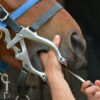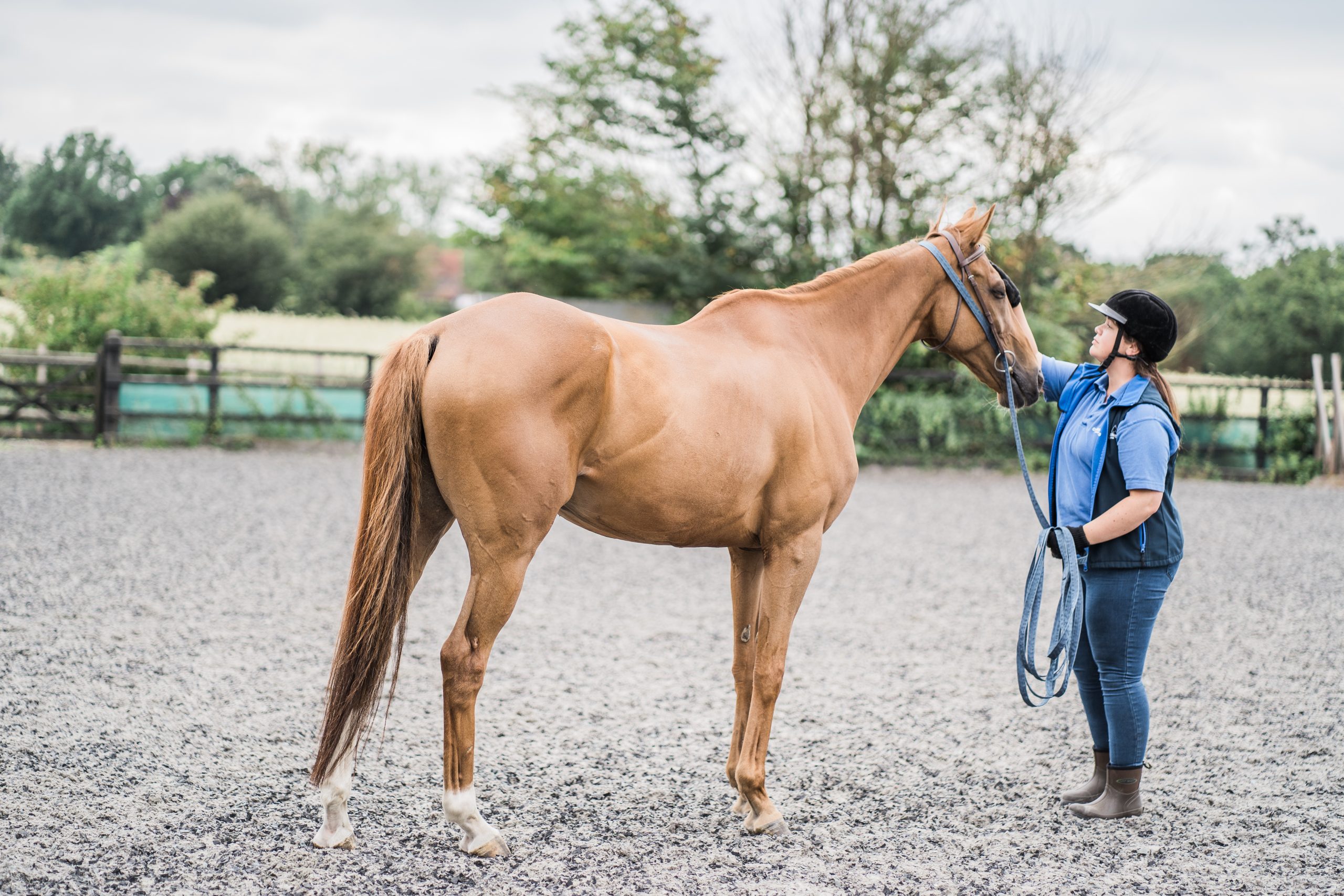If you’re a horse owner or work with performance horses, you know how important keeping them healthy and comfortable is.
One of the primary areas of concern for these animals is their back.
Back problems can cause pain and discomfort and even affect their performance.
In this blog post, we’ll explore the most common back disorders that horses suffer from, including overriding dorsal spinous processes (ODSP) and kissing spines.
We will also delve into multifidus muscles – critical players in supporting your horse’s axial skeleton and explore how the supraspinous ligament is vital to maintaining stability within the lower back area.
So let’s start learning about some of the most common primary back problems affecting our beloved four-legged friends!
Common Causes of Back Problems in Horses
Horses are powerful and graceful animals but can also be prone to back problems.
Poor saddle fit is among the most common causes of equine back pain. When a saddle does not fit correctly, it places extra stress on specific areas of the horse’s body that can lead to pain or even injury.
If left untreated, this could result in lasting harm to the spine.
Issues such as kissing spine lesions, ligament damage or arthritis of the joints can also cause significant back pain in horses. These conditions may sometimes require medical intervention, including surgery or injections to relieve chronic pain.
Improper schooling techniques are another frequent culprit behind equine back problems. Injuries caused by incorrect riding posture or repetitive movements can put a strain on muscles and tendons, leading to inflammation and soreness.
Trauma from falls or accidents is another possible source of spinal pain. Any sudden impact with a hard surface can potentially cause severe damage if not treated promptly with rest and appropriate care from a vet specialising in equine medicine.
Lastly, muscle imbalances due to poor conditioning routines often lead to postural misalignments causing further discomfort. Regular exercise sessions are essential for maintaining healthy musculoskeletal balance throughout your horse’s life.
The common causes of back problems in horses can range from poor saddle fit and excessive tack pressure to genetics pre-dispositioning certain breeds towards spinal disorders.
With this knowledge, it is crucial to recognise the symptoms and diagnosis of equine back pain for early detection and treatment.
Important Takeaway: Poor saddle fit, improper schooling techniques, and muscle imbalances can cause equine back problems, which require prompt veterinary care. Left unchecked, these issues can result in long-term damage that is avoidable through regular exercise sessions and correct riding posture.
Symptoms and Diagnosis of Equine Back Pain
When diagnosing back pain in horses, it is essential to consider the clinical signs, movement patterns and saddle fit.
By recognising these factors and using diagnostic tools such as radiography/ultrasonography, vets can accurately identify equine back problems.
Clinical signs of equine back pain include reluctance to move forward or backwards, difficulty turning in one direction more than another, an altered gait pattern (such as a shorter stride), stiffness when moving around corners or on inclines/declines and general lameness. The horse may also exhibit tail swishing or pinning its ears when being ridden.
Assessing the horse’s movement patterns is essential in determining potential causes of back pain.
If asymmetries in the horse’s movement are detected, this could indicate a musculoskeletal problem related to back pain, warranting further investigation and potential saddle adjustment.
It is essential to investigate and check saddle fit as an ill-fitting saddle can cause pressure points leading to spinal discomfort. Intensive treatments can often be avoided with timely recognition and appropriate corrective measures.
Radiographs/ultrasounds can provide valuable information about what is happening inside a horse’s body, allowing vets to assess bone density changes that may indicate arthritic conditions affecting joint structures surrounding spinal segments.
Proper diagnosis of equine back pain is essential for successful treatment. Therefore, knowing the potential remedies to reduce and manage back pain associated with horses is crucial.
Important Takeaway: Recognising the signs, physical characteristics and movements associated with back pain in horses is essential. This includes being able to recognise symptoms of arthritis in a horse’s spine, as early detection of this condition can help to prevent serious complications.
Treatment Options for Equine Back Pain
Topical medication is often used for minor cases, while systemic drugs may be necessary for more serious situations. Rehabilitation programs can also help horses recover from back injuries and restore normal movement patterns. Registered physiotherapists, farriers and saddlers can provide additional support throughout treatment.
With the right combination of treatments, equine back pain can be managed effectively. Complementary therapies such as massage and acupuncture may relieve horses suffering from back problems.
Important Takeaway: With a combination of treatments and complementary therapy, horse owners can manage their animals’ pain from spinal issues. Massage and acupuncture may be able to provide further relief for these animals.
Complementary Therapies for Equine Back Pain Management
Your vet can recommend complementary therapies for equine back pain management and offer up-to-date advice tailored to each case.
For example, massage therapy reduces muscle tension, while acupuncture helps relieve nerve pain associated with spinal conditions. Both techniques are helpful tools that can be incorporated into an overall therapeutic plan depending on the needs of each horse patient. Receiving chiropractic care can also address any structural problems causing pain or discomfort.
Massage, acupuncture, and chiropractic treatments can successfully address back pain in horses. With a saddle fit assessment and correction techniques for preventative care of your horse’s spinal health, you can help ensure that your horse remains healthy and comfortable throughout life.
Important Takeaway: Traditional treatments such as chiropractic and massage can help treat your horse’s back problems. However, taking a holistic view of their condition is equally important.
Conclusion
Many horse-related spinal problems can be avoided or alleviated by combining preventative care, diagnosis, and treatment. Proper tack fitting and complimentary remedies such as chiropractic care and massage therapy are key elements in minimising or eliminating pain. With good care, your horse will remain healthy, happy, and able to perform.
Speak to Clarendon Equine today about caring for your horse’s back and for all your veterinary needs.








